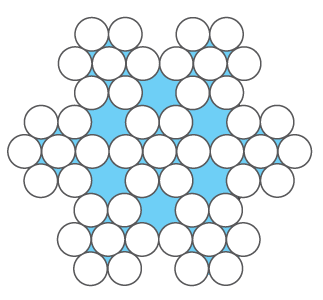Your Guide to the NCC Balustrade Regulations
Balustrade regulations in Australia are governement by the National Construction Code 2015. This code provides guide lines for balustrade construction, materials and heights restrictions. A balustrade is defined as a rail and its baulsters, including timber, metal and glass.
The NCC remains largely unchanged since 2005 with proposed amendments in 2019 unsupported by the Australian Building Codes Board (ABCB). A copy of the NCC is now available free online here.
My deck has a drop off more than 1 metre to the area below, what do I need to do? You will need to fit your wires and posts according to NCC Regulations. Below is the applicable table for doing horizontal wire balustrades.
My deck has a drop off more than 4 metres to the area below, what do I need to do? In this situation you are not allowed to use horizontal wires and instead they will need to be vertical. This process can become slightly more complicated, please contact us at [email protected] or call us at 1800 776 744 for advice on how to design your vertical balustrade.
Can I use wire balustrade around a pool? You must use vertical wire balustrade around pool areas to prevent climbing. It is recommended that you contact a ProRig sales consultant to help you decide if vertical balustrade is right for you.
Getting Started
One of the first steps when planning your wire balustrade is to have an understanding of the different wire types that are available, the most common wires used for balustrades are 3.2mm 1 x 19, and 3.2mm 7 x 7 wire (also described as 3mm wire). 3.2mm refers to the diameter of the wire, and 1 x 19, and 7 x 7, refers to the construction or lay of the wire I.E. 1 x 19 wire is made up of 1 single wire with 19 strands, where as 7 x 7 wire is made up of 7 wires with 7 strands within each wire, below is a diagram showing the make up of each of these wires.
 1 x 19 - Is a very rigid wire making it very well suited for wire balustrades, however it cannot be hand swaged, making it only suitable for hydraulic swaging.
1 x 19 - Is a very rigid wire making it very well suited for wire balustrades, however it cannot be hand swaged, making it only suitable for hydraulic swaging.
 7 x7 - Is semi-flexible wire making it the perfect choice for balustrades where hand swaging is being used.
7 x7 - Is semi-flexible wire making it the perfect choice for balustrades where hand swaging is being used.
Common Situations
Will the regulations apply to my balustrade? It may be possible that your wire balustrade will not need to comply with NCC regulations; below are some common situations and how you can deal with them.
My deck has a drop off less than 1 metre to the area below, what do I need to do? If the bottom of your deck is less than 1 metre off the ground, then the regulations will not apply to you. It is up to you to decide the most appropriate level of safety, wire spacing and how many support posts you use on your balustrade.
What works best when installing horizontal wires?
3.2mm 1 x 19: We have found that when using 3.2mm 1 x 19 wire rope, having your posts spaced at 1500mm and your wires at 80mm spacing is the easiest way to ensure the tension required for your balustrade will be easily achievable and will pass inspection.
3.2mm 7 x 7: We have found that when using 3.2mm 7 x 7 wire rope, having your posts spaced at 1500mm and your wires at 80mm spacing is the easiest way to ensure the tension required for your balustrade will be easily achievable and will pass inspection.
This means that a balustrade with wire support posts every 1500mm, and a top rail height of 1 metre (960mm to the underside of the handrail, plus a 40mm handrail is most common) will require 11 runs of wire when spaced at 80mm with a tension that will be easily achievable.
Please note: The above recommendations are the opinions of ProRig derived from their own testing and experience and are intended as a guide only. In some situations, it may be more suitable to use different wire or posts spacing. Please email us, [email protected] or call us on 1800 776 744 if you are unsure or you require any advice.
NCC 2019 Tables
In order to satisfy the NCC 2019 regulations for horizontal wire balustrade, your system must either meet the tension requirements set out in Table 3.9.2.1; Table 3.9.2.2 or Table 3.9.2.3
NCC 2019 Volume 2 TABLE 3.9.2.1 WIRE BARRIER CONSTRUCTION REQUIRED TENSION FOR STAINLESS STEEL HORIZONTAL WIRES

NCC 2019 Volume 2 TABLE 3.9.2.2 CONTINUOUS WIRE BARRIER CONSTRUCTION REQUIRED TENSION FOR VERTICAL OR NEAR VERTICAL STAINLESS STEEL WIRES

NCC 2019 Volume 2 TABLE 3.9.2.3 CONTINUOUS WIRE BARRIER CONSTRUCTION MAXIMUM PERMISSIBLE DEFLECTION FOR STAINLESS STEEL WIRES


 1 x 19 - Is a very rigid wire making it very well suited for wire balustrades, however it cannot be hand swaged, making it only suitable for hydraulic swaging.
1 x 19 - Is a very rigid wire making it very well suited for wire balustrades, however it cannot be hand swaged, making it only suitable for hydraulic swaging. 7 x7 - Is semi-flexible wire making it the perfect choice for balustrades where hand swaging is being used.
7 x7 - Is semi-flexible wire making it the perfect choice for balustrades where hand swaging is being used.